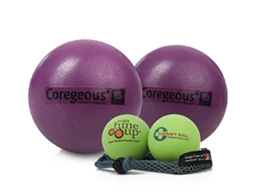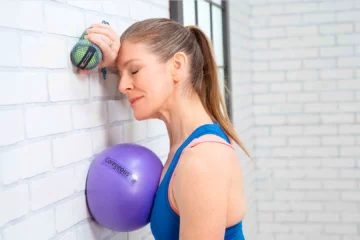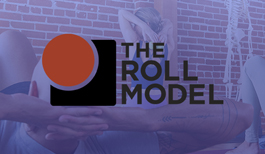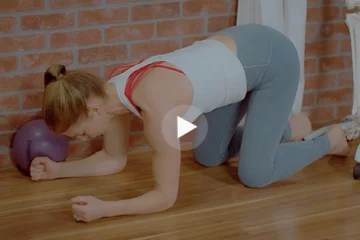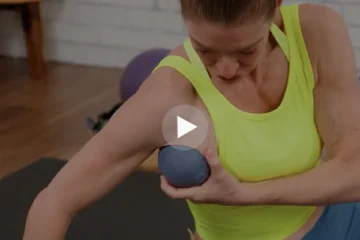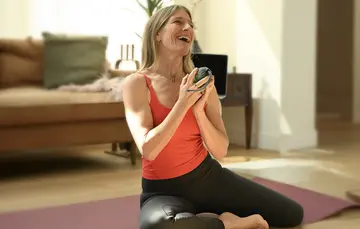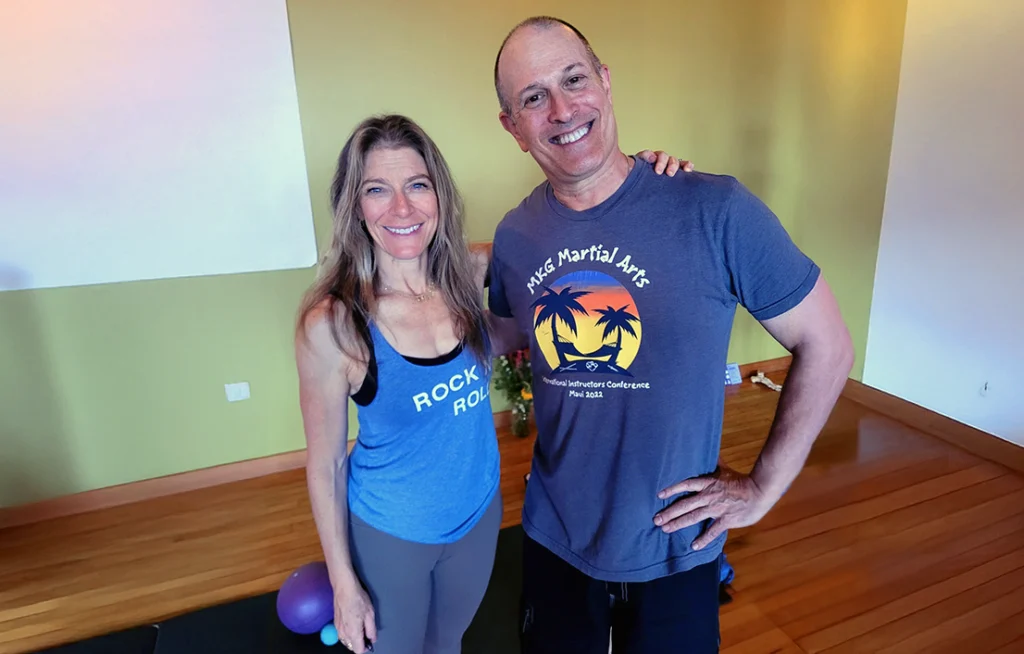
Meet Eric Sutz: A Lifelong Music Educator on a Journey of Self-Care Through Movement and Music
With a rich background in music, Eric Sutz graduated with a Bachelor of Music from DePaul University in 1980. Throughout his career, he has worked as a music director, conductor, arranger, and teacher for over 47 years. He has presented programs for teachers and schools since 1985 and his book: “How to Play and Teach Popular Music Creatively” was first published in 1986.
Now deeply immersed in self-care through movement and music, Eric’s exploration of posture, alignment, and myofascial release techniques has transformed both his life and the lives of those he teaches.A man always searching to keep his mind sharp, Eric considers himself a forever student of life and much of his knowledge of anatomy and bodies has been self-taught and a journey of remembering what he already knew.
About the author: Interview led by Erin Wen, Tune Up Fitness content writer. Erin works as a Osteopathic Manipulative Therapist (OMT) and movement specialist for over 15 years. She has a background in classical ballet that eventually led her to become a yoga and movement instructor. She is also a certified Yoga Tune Up® instructor and currently offers multiple treatment modalities including osteopathic manipulation, pelvic floor and pregnancy support, and movement training and workshops.
Erin: How did you come about Jill’s teachings and Tune Up Fitness?
Eric: Jill really is one of my personal heroes. I came about her through the Treat While You Train program she offered with Kelly Starrett that was recommended by a trainer of mine from the Egoscue System. It is a program developed by Pete Egoscue that focuses on postural alignment. His first book is called Pain Free. At that time, it was a forerunner to everything we think and know about pain now. It was information that was ahead of its time. With the Egoscue System, you are looking at someone’s alignment, they’ll watch you walk and from there they might notice if one hip is higher or if your toes turn in or out while you walk. From that information, they’ll develop a menu of exercises, stretches, and drills that are meant to get your gait to be even. The method is used by many athletes. So my trainer recommended that I look into Kelly Starrett. I saw the program that was offered with Jill and bought it immediately.
I saw Kelly and Jill do their thing and instantaneously I was like “oh my god!”. It made so much sense to me, it was like something I already knew but it had been dormant in me. It felt like information my body knew but had forgotten, and it completely changed my view of self-care. I realized that all the years of injuries I had had from athletics and martial arts, and after spending hundreds of thousands of dollars in therapies that I could have treated myself.
I felt like the information offered by Jill and Kelly was a re-awakening of information that I already knew somehow. Over the years, I became more observant of people and their misalignments and I have been able to fix people simply by looking at their posture.
Erin: Can you share a story about how you helped somebody using the knowledge you learned from Tune Up Fitness?
Eric: One time I was on an airplane going to Europe and I had gotten up and was using the Yoga Tune Up® balls on my shoulder when this young man who was waiting for the bathroom asked me: “What are you doing?” and I said well, I am working on my shoulder and he went on to tell me he had had a shoulder problem for years and if what I was doing could help. And sure enough, in the span of 6 minutes on a plane flying to Europe, I helped this young man fix his shoulders and he was utterly astounded.
Erin: Although you’re not necessarily a fitness teacher, you are a teacher in your field of music. Do you have a teaching style?
Eric: I have been teaching for about 47 years. The teachers I had growing up for piano, jazz, and classical music were very ferocious. When I started teaching I was more like that, I guess more hardcore and everything had to be exactly right and exactly perfect. Over the years, I have adapted more of a Zen approach, like water washing over a rock approach. I can get stuff done, and maybe even more, but doing it in a softer way. Almost like the difference between Taiji versus Karate. I still have high expectations for myself but I don’t hold those expectations for others. I do like to push my students to grow and learn.
It’s important to know that as we age, we have to adapt our practices.
– Eric Sutz
Mobility and Recovery for Musicians
Erin: As your teaching style has softened, has your own practice of martial arts also evolved throughout the years?
Eric: It’s important to know that as we age, we have to adapt our practices. When you’re very young you can do more athletic-like movements, maybe high kicks or flying kicks. And then as you get older you have to use more leverage, maybe learn better foot placement; you have to use other skill sets. You also have to learn where your limitations are. When you’re young you feel you can do it all. Hopefully we can put up a good fight as we age.
Erin: Are you learning something new these days?
Eric: Always. I have 8 languages going on in different apps. I am learning French, Spanish, Serbian, Hebrew, Yiddish, German, Italian, and Japanese.
There is an App that I use called Elevate. What I like about it is that it gives you speed tests in different areas such as math, percentages, languages, punctuation, and others. I want to keep my mind and memory sharp. I also want to stay physically and mentally sharp. I like to challenge myself. I have also been studying chess for decades. I am always involved in learning, I like listening to lectures and history.
Erin: Do you have any injuries that have healed with myofascial release techniques?
Eric: Yes, I developed Dupuytren’s contracture (trigger finger) probably as a consequence from using the computer more during Covid times . It became very aggressive and painful. It affected my whole hand so much that I would wear a brace during the night so that my finger would stay straight. During that time, I primarily focused on myofascial release techniques for pain relief for my hand and forearm. I did it A LOT and it helped tremendously. Even an orthopaedic surgeon I had was impressed by the effects from the rollouts.
Music Teacher Wellness Routine
Erin: How does TUF support your personal practices?
Eric: The tools that I have learned from Jill have had a massive effect in my life. I am doing something with the knowledge I have learned on a nearly daily basis – I feel being educated about anatomy, muscle, and fascia is just so valuable and important. Even as we speak now I have a pair of Yoga Tune Up balls under my thigh!
For issues that are soft tissue related, which is what most people have, whether it is back, neck, shoulder, knee pain or stiffness; those things are ubiquitous in our society because of the type of society and sedentary lifestyle that many have. Because of these reasons, it is extremely important to be aware of our bodies and take a crack at it, to know that you should look at your self-care tools. You will save yourself an enormous amount of money and time. You are putting more of the responsibility in your own hands and know that these tools can empower you to treat yourself.
That is why I feel that the skills that Jill teaches along with others that have so much knowledge such as Tom Myers and Kelly Starrett are so valuable.
Erin: How do you think your body benefits from the myofascial release techniques?
Eric: What I feel is that the various rolling techniques such as a contract & relax, stripping, or shearing help me find trigger points and acupuncture points that may be needing some attention. Even if I am sitting, I will use them under my feet to relax and address any issues that might come up from sitting for too long.
Erin: What’s your go-to rollout/exercise?
Eric: The one that is probably my favorite that I have gotten a lot of return on is any sort of scrubbing along my lats to my subscapularis; I just find it so helpful. I love any work along my scalene and trapezius muscles. Kelly Starrett and Jill would probably say the same thing, that it is important to think about the body in systems. So maybe if there is a lot of stiffness around the shoulder blade, it is not only working that area but maybe you need to go to your rhomboids and your thoracic spine to address the issue.
When I have friends asking me to help them with a specific part of their body, I often prescribe them a rollout that may be further from the area they are complaining about and although they might not think it is connected, after they do it, they realize how it often alleviates pain where they were complaining about originally. I don’t tell them too much because I want them to experience it themselves.
Erin: How do you help people in your community with the knowledge that you have about self-care?
Eric: When I am working with both teachers and students, it’s actually pretty straightforward. I like to educate people on how to support their physical bodies through awareness, rollouts to release tension, and education about anatomy. I teach people how to move mindfully and feel possible knots due to accumulated tension.
Erin: What are your top self-care tips?
Eric: I think it is very important to get enough rest. I think it’s very important to not get attached to social media. I couldn’t recommend that enough. I think it’s very important to maintain a healthy diet and a healthy weight. It is important to understand that as you age, you must maintain your muscles. I think walking and doing some sort of cardio is important. Any movement routine that you like and enjoy is also crucial, whether it is yoga, Pilates, martial arts or Jill’s classes. And some type of strength training is a must. There is no other way around it, if you want to maintain a healthy body, you need to practice strength training.
Erin: How do you deal with your own stress?
Eric: One of the best ways is to keep all the news out. It’s not that I am encouraging people to be willfully ignorant but we have to try to live moment to moment, your day to day as best you can and avoid as much of the chatter, the background noise as much as possible. I am a big believer in mindfulness meditations. I have been doing mindfulness meditation for decades. I enjoy the teachings of Sadguru Deepak Chopra.
There is an app that I like a lot that is called “calm”. I use it nearly everyday. Very often, one of the first things I do in the morning is I follow one of these meditations. I try to keep my mind clear and focused. I try to wake up my best self, hopefully.
Erin: Can you give me 3 sources of knowledge that make you who you are today?
Eric: Well, I would say in general, it is important to know about history. The more educated you are, the more you can put in context what you see. Because history does repeat itself. I listen to lectures, watch documentaries that are related to all types of history.
In terms of philosophers, I have always been into stoic philosophy. I find it useful in day to day living because it’s not like you are living in an ashram detached from society but you are actually living in the world and having to deal with day to day life. I recommend it a lot.
Third, I would say the most important is self-knowledge, whatever that embodies, whether it is physically or mentally. Asking yourself why you behave the way you behave? What makes you feel good? What triggers you? Trying to find honest, real answers. As I get older, I have realized that it is less important to think about goals and it is really about the journey on how to get there. The journey and the pathway is much more important than the destination.
Erin: How do we make the world a better place?
Eric: I would say to do everything possible to lift the veil of ignorance. I think ignorance is the greatest source of evil. The more ignorant people are, the less knowledge they have, and the easier it is for terrible things to happen.


